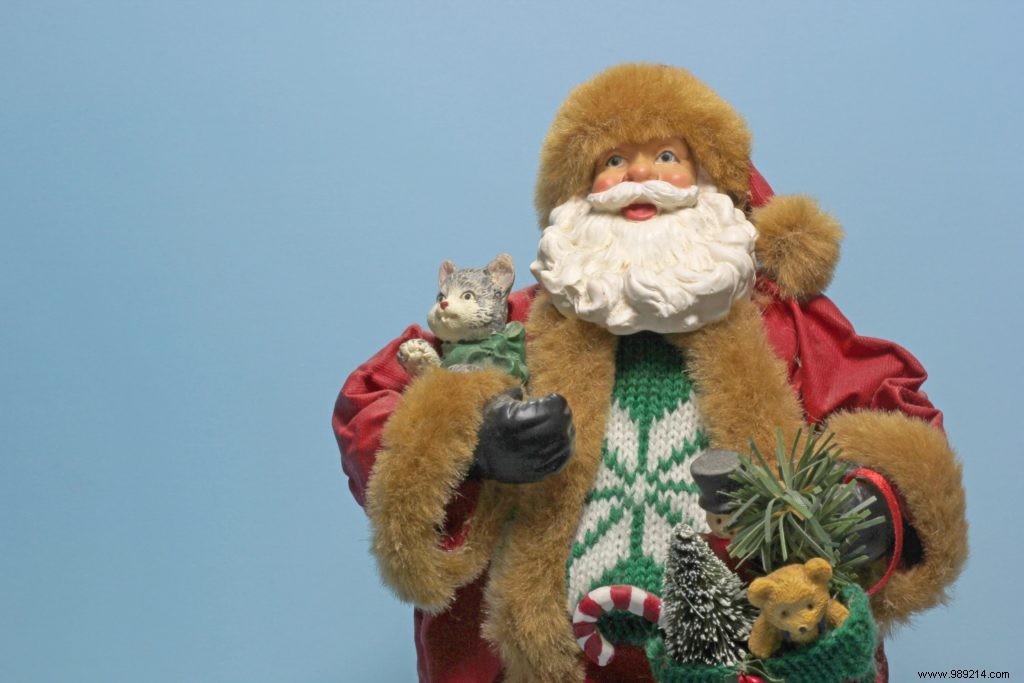
One day or another will come the fateful moment when your child will begin to have doubts about the existence of Santa Claus. If, as a general rule, until the age of 4, all children remain convinced that Santa Claus exists, once the age of reason has been reached – which corresponds to entering first grade – they can begin to show of skepticism since their part of the imaginary tends to regress in favor of the real. No need to be alarmed or to evade the question, like other existential questions, the discovery of this reality is essential to their learning of the “things of life”. Predicting when this conversation will take place is difficult, but planning your response strategy helps provide an explanation when the time comes that doesn't spoil the Christmas spirit.
Contents 1 Why let the child take the first step 2 A gentle announcement 3 Santa Claus is a symbolIf some pedagogues like Maria Montessori affirm that letting children believe in Santa Claus is to abuse their trust, in reality, if someone firmly believes in something, it is useless to try at all costs to make him listen to reason at the risk of rushing him. Some children begin to express doubts quite early in their life, others, on the contrary, do not ask themselves any questions despite the pressure of classmates or brothers and sisters. Each child develops at their own pace and this should be respected. However, if he comes to ask you to give him an answer, it means that he is ready to accept the possibility that Santa Claus does not exist. Therefore, children need to hear the explanations from their parents to consolidate their ideas. And it is not because a child knows that Santa Claus does not exist that he will lose interest in the magic of the holidays. On the contrary, this moment of revelation is only one more step in its development. He will feel more responsible for being aware of the "secret" and will even take malicious pleasure in perpetuating the myth among the youngest.

When the child initiates the conversation on this subject, you can first turn the question back to him, if only to stimulate his spirit of deduction and explore with him the veracity of the clues he has in his possession. He can tell you, for example, that he finds it strange that Santa Claus still manages to place presents under the tree when you don't have a chimney or wonder how Santa Claus can be in several shopping centers in same time while working hard on the preparation of the gifts… By listing his proofs, there is a good chance that something clicks in his head and that ultimately your role is limited to validating his reasoning. In any case, the child must understand gently. Don't skip the steps. If he asks for explanations on such and such a thing, enlighten him. And don't ridicule him. Take the time to answer him calmly while letting him lead the conversation. Thus, he will not feel frustrated or betrayed and will even gain more self-confidence, satisfied with the logic of his mind!
Or maybe his doubts are simply unfounded and if the child asks you the question it is because of peer pressure. Either way, if he is not insistent or if he does not show great conviction about his perplexity, letting him further mature his thinking may still be the best solution.

Instead of supporting your child in the fact that Santa Claus does not exist, you can also try another approach. Indeed, it must be kept in mind that letting your child cultivate his imagination is in no way synonymous with letting him live a lie. Just because Santa Claus isn't made of flesh and blood doesn't mean he doesn't exist. There is therefore no reason to express guilt or to want to bring the child back to reality at all costs. Indeed, for everyone, Santa Claus is a kind of symbol, a myth or a metaphor for Christmas that makes him inseparable from this warm and special atmosphere. It represents the kindness and generosity specific to these festivities. Adults themselves sometimes like to believe in Santa Claus since he brings back happy memories of childhood, not to mention that he has been a major player in our development and has contributed in some way to building us as we are. are today.